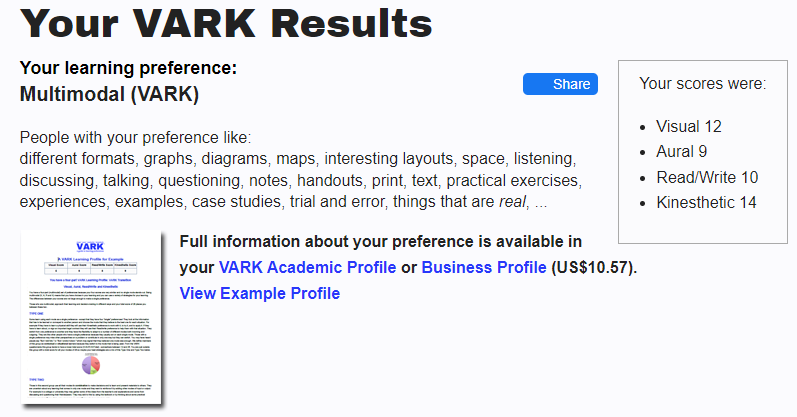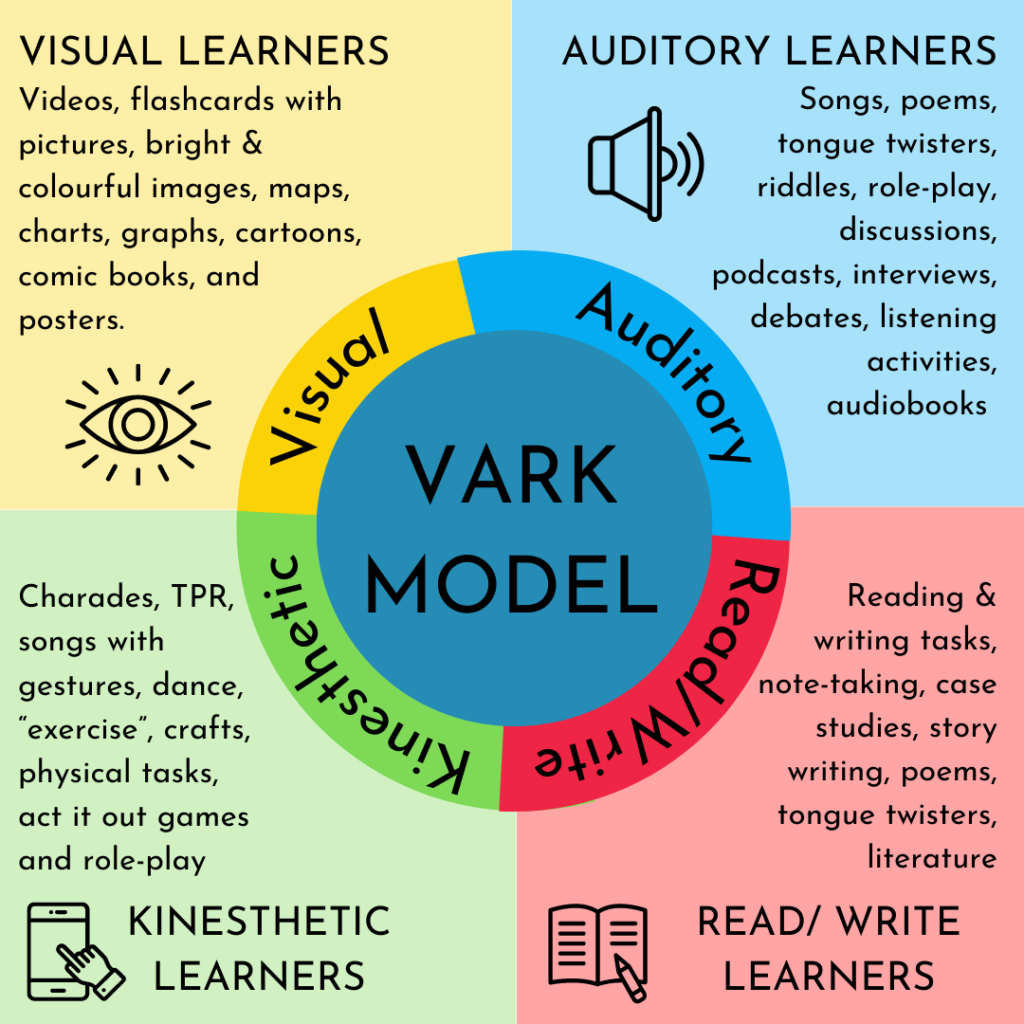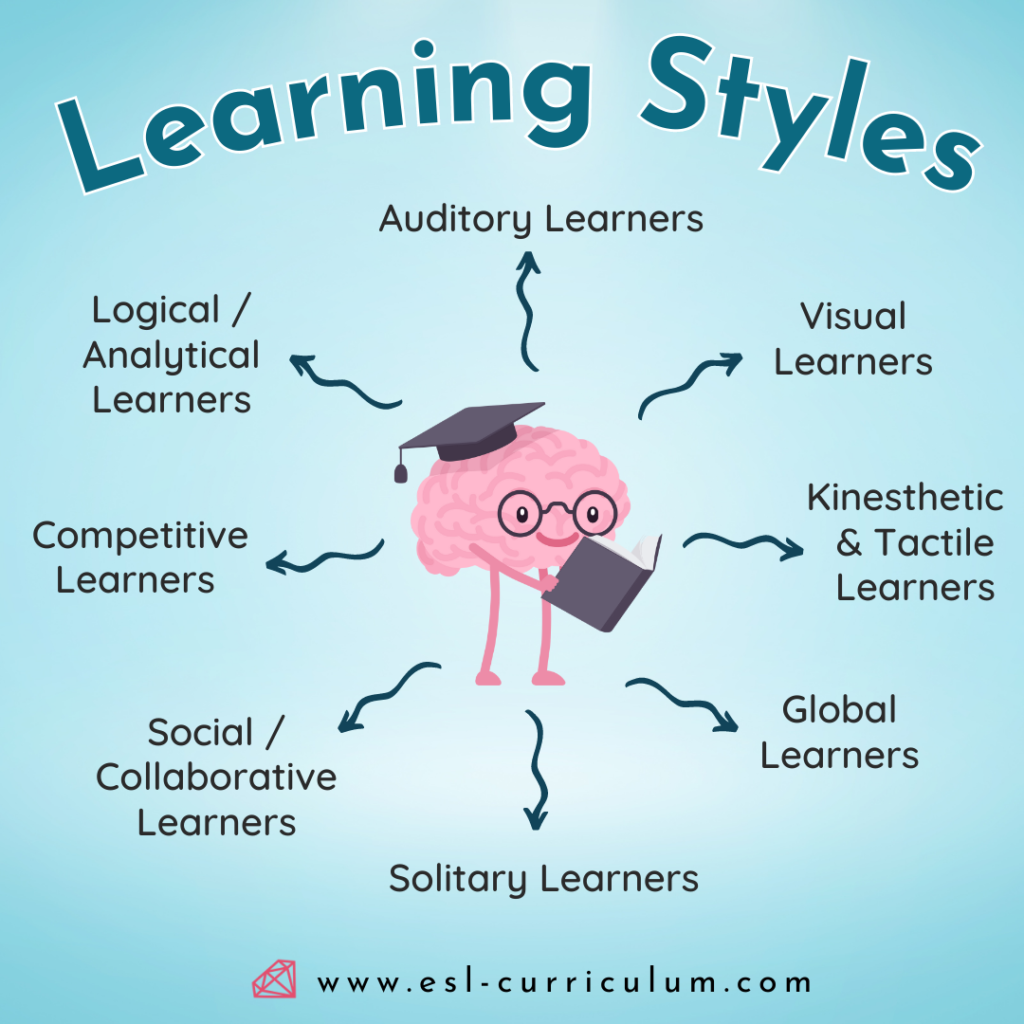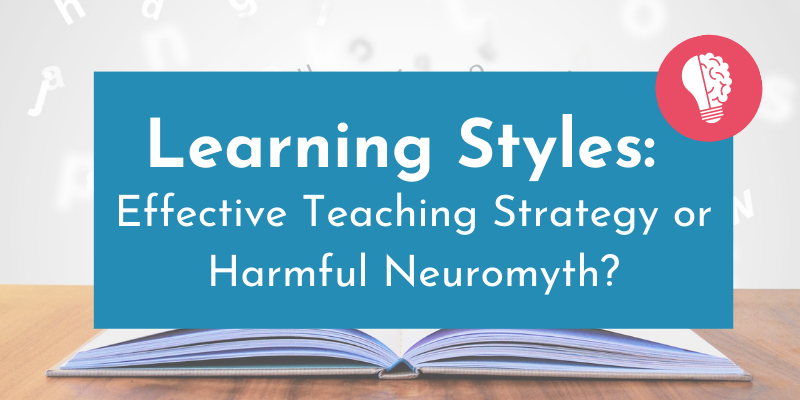Learning Styles – Effective Teaching Strategy or Harmful Neuromyth?
If we were all the same, how boring would life be? Diversity truly is the spice of life, and it’s no different when it comes to students!
Each student’s learning preferences and personality is what makes teaching an exciting occupation and keeps us teachers on our toes! The human experience and how we interact with the world around us is unique for every individual, and naturally, with that comes variations in the ways we prefer to learn and process information.
This month, we explore the concept of learning styles and discuss whether this timeless approach to personalising lessons is effective, or rather, a harmful neuromyth. According to an article published in Psychological Science in the Public Interest, the term ‘learning styles’ refers to the concept that individuals differ regarding what mode of instruction or study is most effective for them.
Research around different learning styles and how people acquire information has been an ongoing topic of exploration for experts in neuroscience and education. The concept of learning styles and the idea that students learn best when lesson delivery matches a learning style grew in popularity in the 1970s and 1980s. Over the years, researchers in this field have uncovered a multitude of different learning styles, ranging from 3 to 170 different styles! Back in 1987, teacher and researcher Neil Fleming introduced the VARK model to help students and educators learn more about individual learning styles. It is still one of the most popular models for classifying learning styles today amidst the vast and often blurry sea of learning style variations.
Other learning style models include Kolb’s Experiential Learning Theory and Gardner’s Multiple Intelligences.
The VARK model classifies students into four distinct learning modes; visual (V), aural (A), read/write (R), and kinesthetic (K). The VARK model includes a self-assessment questionnaire to determine one’s learning style. The assessment comprises four scores and classifies learners with no standout mode of learning preference as MM (Mixtures Multimodal).

Let’s start by looking at the variations in the VARK model:

Visual Learners:
Visual learners comprehend information best through visual aids such as graphs, charts, maps, and diagrams. Visual learning is sometimes referred to as a ‘spatial’ learning style. These types of learners “think” in pictures and want to see the words they hear. VARK’s definition of visual learning focuses on design, the use of white space, meaningful symbols, patterns, and shapes to depict information.

Aural / Auditory Learners:
Auditory learners comprehend information best through hearing and listening. They don’t need visual stimulation to grab their attention and will respond well to spoken instruction. Auditory learners learn best through lectures, group discussions, radio, and podcasts. They process information best by speaking and repeating information to others or themselves.

Reading/ Writing Learners:
To the Reading/Writing learner, text trumps any visual or auditory representation of an idea. These types of learners consume information best when it’s in words, whether it be writing or reading it. Reading/Writing learners will excel in text-based instruction and tasks.
Kinesthetic Learners:
The Kinesthetic learning modality is referred to as “a perceptual preference related to the use of experience and practice (simulated or real).” (Fleming & Mills, 1992, pp. 140-141) Kinesthetic learners learn through ‘doing’ and immersing themselves in the natural world. They gravitate toward real-world examples and applications to process information.
Tactile learners and kinesthetic learners are often categorised together. While these terms are sometimes used interchangeably, many educators and researchers make a distinction between the two. Tactile learning typically focuses more on the sense of touch, physical sensations, and manipulation of objects. Kinesthetic learning encompasses a broader range of physical activities, movements, and hands-on experiences.

Outside of the VARK model, here are some other common learning styles you may have heard about:
Logical/analytical, Competitive, Collaborative, Global, Solitary and even Olfactory learners!
Can you think of any other learning style to add to this list?


Marvelous Method or Harmful Neuromyth – Does learning style REALLY matter?
The belief that learning styles matter and have a direct impact on a student’s academic success is a hot topic of debate, with many researchers now debunking learning styles as a ‘neuromyth’.
Professor Phil Newton of Swansea Medical University, along with Swansea University student, Atharva Salvi, conducted a study that showed almost 90% of educators from around the world reported that they believe in the efficacy of learning styles. Do you?
How a student best consumes information can be a deciding factor in their academic success, but that doesn’t mean we should exclusively tailor our lessons around this one factor. While it is true that we will all have a preference for how information is presented to us, there is little evidence to support that catering to these preferences directly enhances learning when tested under experimental conditions.
“There is no credible evidence that learning styles exist,” write psychologists Cedar Riener and Daniel Willingham in a 2010 paper titled The Myth of Learning Styles. “Students may have preferences about how to learn, but no evidence suggests that catering to those preferences will lead to better learning.”
A team led by cognitive psychologist Dr. Harold Pashler reviewed decades of research and found no compelling evidence that matching instruction to preferred styles enhanced learning.
A recent article by Professor Phil Newton explains that various reviews, carried out since the mid-2000s, have concluded there is no evidence to support the idea that matching instructional methods to a learning style directly improves learning.
Where does this misconception come from?
Misconceptions about learning styles are fueled by the knowledge that different regions of the brain predominately process auditory, visual, and kinesthetic information. While that is true, these areas of the brain interconnect with each other. As soon as one modality is activated, others are too, allowing information to transfer between different sensory regions. The brain works as an integrated whole, not discrete, closed-off compartments – and we should apply the same school of thought to our students!
How you teach something should not be determined by a student’s learning preference but rather by the language skill you want to focus on and the learning outcomes of your lesson. Optimal learning for everyone, regardless of learning preference, involves the opportunity to engage in as many sensory modalities as possible. Language acquisition, after all, is determined by a person’s ability to speak, read, write, and process auditory information.
Yes, students express preferences about how they want to receive information, display variations in functions, and may display an affinity for a particular modality, but how you deliver and tailor a lesson should never revolve exclusively around this preference. In fact, tailoring lessons to suit this preference can be detrimental and neglect the other language-acquisition skills an ESL learner needs. Choosing to tailor a lesson around a student’s learning style keeps a student in their comfort zone and may not provide sufficient challenge for them.
Labels in the classroom can be misleading, demotivating, and dangerous! Professor Newton states: “This apparent widespread belief in an ineffective teaching method that is also potentially harmful has caused concern among the education community.” He said: “For example, a student categorised as an auditory learner may end up thinking there is no point in pursuing studies in visual subjects such as art or written subjects like journalism and then be demotivated during those classes.”
Does this mean we should squelch the spirit of a student’s individuality in the name of science? Of course not! Personal characteristics such as general cognitive ability, intellectual curiosity, self-regulation, interests, circumstances, maturity, and personal language-learning goals are all factors to consider when tailoring an ESL lesson to suit your student.
So whether you are a full-fledged advocate of learning styles or not, the key takeaway should be that incorporating multiple sensory experiences into one lesson makes it more meaningful for all students, regardless of learning style. You should consider a student’s individual preferences but also engage them with learning in multiple ways, thus giving them the best opportunity to truly understand the concepts you are trying to teach.
One thing remains a fact: When it comes to the field of education, we still have so much to learn!
Sources:
Dekker, S., Lee, N. C., Howard-Jones, P., & Jolles, J. (2012). Neuromyths in education: Prevalence and predictors of misconceptions among teachers. Frontiers in Psychology, 3.
Riener, C., & Willingham, D. (2010). The myth of learning styles. Change: The magazine of higher learning, 42(5), 32–35.
Pashler, H., McDaniel, M., Rohrer, D., & Bjork, R. (Year). Learning Styles: Concepts and Evidence, Psychological Science in the Public Interest, 9(3), 105-119.







